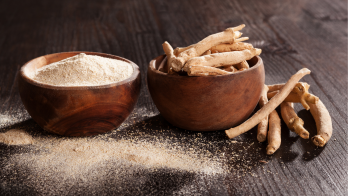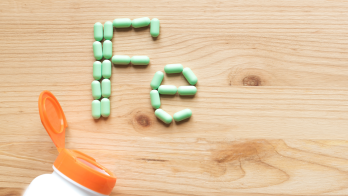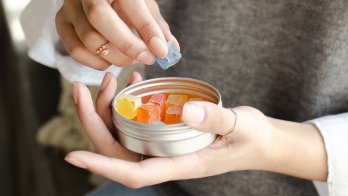The best blood sugar supplements, according to science
Medications are often necessary to manage sub-optimal blood sugar levels, but research shows that certain supplements may be useful as well. From aloe vera to chromium, here are some of the best science-backed blood sugar supplements to help reign in your glucose levels.

If you struggle with high blood sugar, you’re not alone; the latest figures indicate that 1 in 3 American adults have elevated glucose levels [ 49
Medication is often used to manage blood sugar levels, but supplements can also have a positive impact on your risk profile. While supplements aren't a standalone strategy for dealing with sub-optimal blood sugar results, certain ones can help lower blood sugar, regulate insulin secretion, decrease insulin resistance, and improve HbA1c levels. Here are some of the best blood sugar supplements, according to science.

Cinnamon
Cinnamon is a common spice that may already be taking up residence in your kitchen cabinet. While it’s a great addition to any baked good or cup of coffee, it can also be beneficial for blood sugar control, as research shows that cinnamon helps to increase insulin sensitivity and move insulin more efficiently into cells [ 1
One study found that those who took cinnamon experienced increased insulin sensitivity that lasted for at least 12 hours, with other evidence suggesting the effects can last as long as two weeks [ 2 3 4
Cinnamon has also been shown to reduce fasting blood sugar in people with type 2 diabetes by 24 mg/dL compared to those who didn’t take cinnamon [ 5
Sources of cinnamon
You can find cinnamon in two forms:
Cassia. This is the most common variety of cinnamon, and is found in most food products as well as the spice aisle of any grocery store. Cassia cinnamon also contains coumarin (an organic substance that can be toxic to the liver), so it’s recommended not to consume more than 0.5-1 g/day [
6
].Ceylon. This type of cinnamon only contains trace amounts of coumarin, so it’s safer when consumed in high doses.
Dosing recommendations
The tolerable daily intake for coumarin is 0.1 mg/kg of body weight, which is around 1 teaspoon of cinnamon/day [ 6
Precautions
Cinnamon may interact with diabetic medications and could put you at risk of low blood sugar (hypoglycemia), so it’s recommended to talk with your doctor before adding this to your supplement routine.
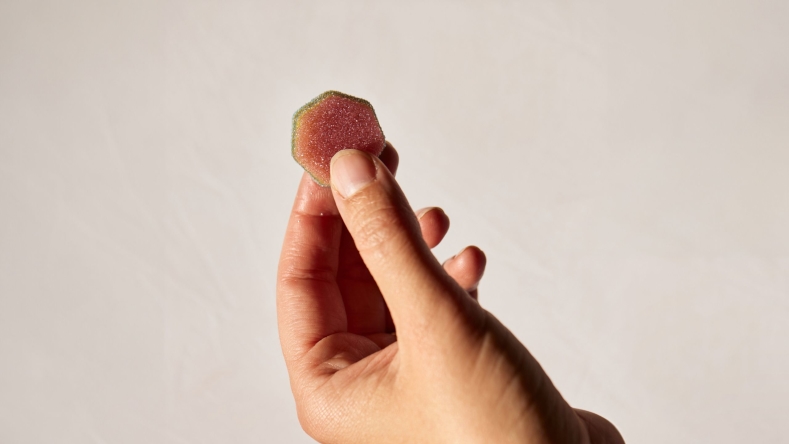
Ginseng
Ginseng is one of the most popular herbal medicines, and has been used in Chinese medicine for centuries to enhance physical and emotional well-being, and increase energy.
There are two types of ginseng (Asian and American), however, it’s American ginseng (Panax quinquefolius) extract that has been shown to regulate glucose uptake, decrease blood glucose levels, and lower insulin [ 7 7 7
Sources of ginseng
The most natural source of ginseng is the root of the plant itself, which can be soaked in hot water to make tea, steamed, or even eaten raw. Ginseng supplements contain concentrated ginseng extract and are available in powder, gummy, capsule, tablet, and oil form. Though ginseng does not naturally occur in other foods, it is sometimes added to energy drinks and food products.
Get ginseng in your Elo Smart Gummies.
Dosing recommendations
American ginseng is likely safe when used short-term and taken in doses of 100-3,000 mg/day for up to 12 weeks [ 8
Precautions
Ginseng is generally well tolerated and considered safe to take in low-to-moderate amounts, short-term. However, evidence suggests that it could cause headaches, diarrhea, or skin irritations, so this herb should be used with caution and under the supervision of a healthcare provider [ 9
Ginseng is not recommended for infants, children, and women who are pregnant, as well as those who have hormone sensitive tumors or conditions [ 10

Probiotics
Probiotics are live microorganisms that have long been known to support immunity, digestion, and heart health. However, emerging evidence suggests that certain probiotic strains (such as Lactobacillus acidophilus, L. casei, L. rhamnosus, L. bulgaricus, L. lactis, Bifidobacterium breve, B. longum, B. infantis, B. lactis, Streptococcus thermophilus and Bacillus coagulans) can be beneficial for reducing HbA1c and fasting insulin/plasma glucose levels [ 50
Studies have found that those with type 2 diabetes experienced lower total cholesterol and triglycerides, higher HDL (“good”) cholesterol, and lower blood pressure after taking probiotics for more than 8 weeks [ 11 12
Sources of probiotics
Probiotics are naturally found in certain foods (such as fermented yogurt, kefir, sauerkraut, kimchi, and kombucha), as well as in your gut.
Probiotics can also be taken as a supplement, but it’s recommended to choose one that contains at least 1 million CFUs/gram [ 13
Get LactoSpore® Probiotic in Elo Smart Gummies.
While there are no precautions associated with probiotics, it’s recommended to speak with your doctor before starting a probiotic supplement to determine the right dosage amount.

Aloe vera
Aloe vera is a tropical, drought-resistant plant that is native to the Mediterranean region, the Arabian Peninsula, India, China and Eastern Africa [ 14 15
One study found that those who took oral aloe vera supplements experienced a 1.05% decrease in HbA1c blood levels and a 46.6 mg/dL reduction in fasting blood sugar [ 16 17
However, more research is needed to determine if aloe vera supplementation is safe and effective to prevent type 2 diabetes.
Sources of aloe vera
Aloe vera can be obtained in supplement form or from aloe vera juice.
Dosing recommendations
There is no recommended dosage for aloe vera, but supplements can range from 100 mg to 10,000 mg depending on the brand. However, more isn’t always better–it’s recommended to consume a lower dose to reduce the risk of side effects.
Precautions
Studies have found a correlation between 1 g of aloe vera and negative side effects like diarrhea, abdominal pain and cramping, and muscle weakness [ 18
Aloe vera has also been shown to interact with certain drugs –especially insulin, diuretics, laxatives, and NSAIDs–and may lower the absorption and effectiveness of these medications [ 19

Berberine
Berberine is a compound found in several plants that has been used to treat inflammatory disorders, skin diseases, digestive and respiratory diseases, microbial pathologies, and may even have a positive impact on blood sugar levels [ 20
Studies have found that those with type 2 diabetes experienced a 20% and 12% reduction in fasting and long-term blood sugar levels, respectively, when taking berberine alongside blood sugar medication [ 23 24 21 22 25
Sources of berberine
Berberine isn’t found in food, so it can only be obtained through supplements.
Dosing recommendations
There is no established Recommended Dietary Allowance (RDA) for berberine, but doses between 1,000 and 1,500 mg/day have been used for research purposes [ 25
Precautions
While there aren’t serious adverse effects associated with berberine supplementation, side effects may include diarrhea, constipation, flatulence, and stomach pain [ 26
Berberine may also interact with certain medications like Cyclosporine, Dextromethorphan, Losartan, and any others that are changed by the liver [ 27
Berberine is also not recommended for infants, children, or women who are pregnant or breastfeeding [ 27

Vitamin D
Vitamin D HbA1c 28 29
Sources of vitamin D
Vitamin D can be obtained through sunlight or with dietary sources like fatty fish, mushrooms, egg yolks, and fortified dairy and grains. However, since few of us get enough sun to make adequate vitamin D, and it’s only found in a few foods, supplementation may be necessary to meet vitamin D needs [ 32
Get vegan vitamin D3 in your Elo Smart Gummies.
Dosing recommendations
The RDA for people between the ages of 1 and 70 is 600 IU per day, and for adults over 70 the RDA is 800 IU per day [ 30 31
Precautions
Excess vitamin D intake (>10,000 IU/day) can harden blood vessels and increase calcium blood levels, which can lead to heart and kidney damage (both of which are concerns for those with diabetes) [ 32

Gymnema
Gymnema (Gymnema sylvestre) is a shrub that has been used in ancient Indian medicinal practice (Ayurveda) for thousands of years. It’s been thought to inhibit sugar absorption and stimulate insulin production, and has been shown to decrease fasting and long-term blood sugar levels in people with elevated blood sugar including diabetes [ 33 34
Sources of gymnema
Gymnema sylvestre is traditionally consumed as a tea, but it can be taken in tablet/pill form or ingested as an extract.
Dosing recommendations
The recommended dosage for gymnema is 200-400 mg, but should be taken under a doctor’s supervision [ 35
Precautions
When combined with other diabetic medications, gymnema may cause your blood sugar levels to drop and lead to dizziness, nausea, and shakiness. Gymnema sylvestre should also not be taken by children or women who are pregnant, breastfeeding or planning to get pregnant.
Talk with your healthcare provider before including gymnema in your supplement routine.
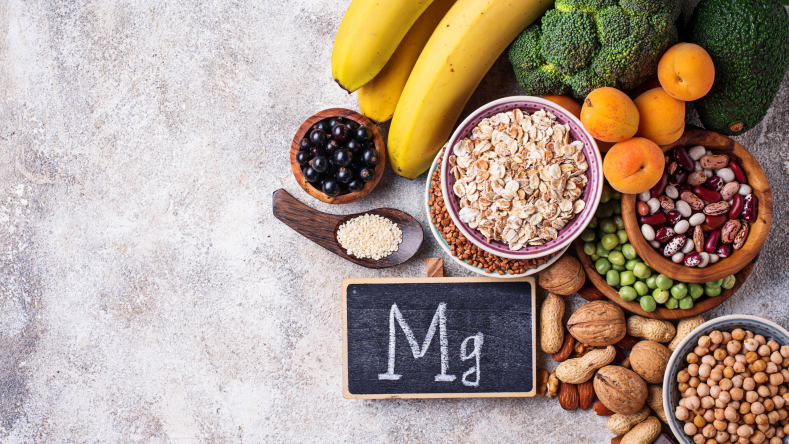
Magnesium
Magnesium 36
Studies indicate those who have diabetes and take magnesium supplements have better blood sugar regulation and may have a 22% lower risk of developing the disease compared to those who consume less magnesium [ 38
Sources of magnesium
Magnesium can be found in sunflower seeds, almonds, and spinach, and may also be obtained through supplementation [ 36
Dosing recommendations
Magnesium needs vary by age and gender. Here is the recommended dietary allowance (RDA) for magnesium [37] :
Males 14-18 years: 410 mg/day
Males 19–30 years: 400 mg/day
Males 31+ years: 420 mg/day
Females 14-18 years: 360 mg/day (400 mg/day during pregnancy)
Females 19–30 years: 310 mg/day (350 mg/day during pregnancy)
Females 31+ years: 320 mg/day (360 mg/day during pregnancy)
Research suggests that even 300 mg/day of magnesium supplementation may be beneficial in lowering fasting blood sugar levels and improving insulin response [ 39
Precautions
When combined with other medications, magnesium may increase the risk of hypoglycemia, so talk with your healthcare provider before adding it to your supplement routine.
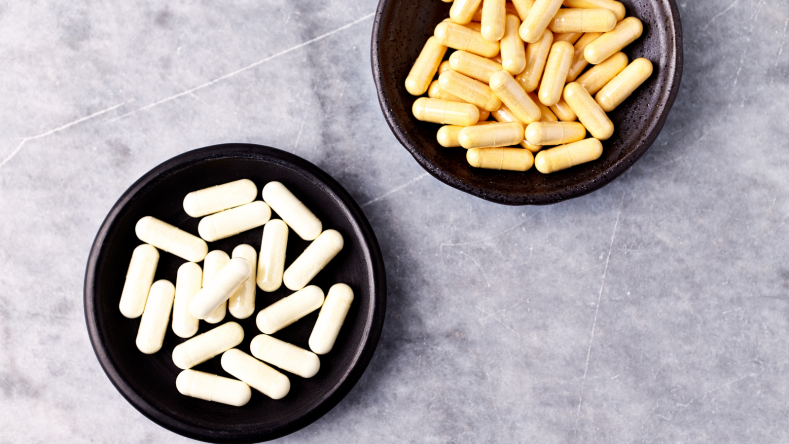
Alpha lipoic acid (ALA)
Alpha-lipoic acid (ALA) is an antioxidant that is mainly used to convert glucose into energy through aerobic metabolism, and has been linked to a reduced risk of death from heart disease, a reduction in blood sugar levels, and improved insulin uptake [ 40 41 42
Sources of ALA
ALA is present in certain animal products (like red meat and organ meats) and plant foods, such as broccoli, tomatoes, spinach, and Brussels sprouts. It can also be obtained through supplementation.
Dosing recommendations
Research indicates that shown doses of 300–1800 mg/day administered for three months up to four years can be safe and effective [ 43
Precautions
While ALA supplementation is generally considered safe, you may experience mild side effects (like nausea, rashes, or constipation). Additionally, if you have diabetes, it’s recommended to consult your healthcare provider, as ALA could interact with glucose-lowering medicines.
Children and pregnant or breastfeeding women aren’t advised to take ALA unless under medical supervision.

Chromium
Chromium is an essential trace mineral that could have a big impact on diabetes. Research shows chromium may improve insulin sensitivity, and enhance protein, carbohydrate, and lipid metabolism, and that supplementation could reduce the likelihood of developing type 2 diabetes by 27% [ 45
Another research study found that people who took 400 mcg/day experienced improvements in endothelial function, lipid profile, and oxidative stress biomarkers, while those who took 200 mcg/day experienced lowered blood sugar and an improved response to insulin [ 46 47
Sources of chromium
Chromium can be found in meats, grain products, fruits, vegetables, nuts, spices, and brewer’s yeast, but the amounts found in these foods widely vary depending on the soil, water conditions, and agricultural processes used to produce them [ 48
Dosing recommendations
The recommended dietary reference intake (DRI) of chromium is 35 mcg/day for adult men and 25 mcg/day for adult women, with no upper limit amount specified [ 48 46
Precautions
Since chromium is a trace mineral, deficiency is rare, but those who are deficient may experience diabetic-like symptoms and impaired glucose tolerance [ 44
To see if chromium is right for you, talk with your healthcare provider before adding it to your supplement routine.
Summary
High blood sugar levels can wreak havoc on your health and raise your risk of heart disease, vision loss, kidney disease, type 2 diabetes and Alzheimer’s. While medication is often used to manage glucose levels, supplements may also have a positive impact on your diabetes risk profile. Even though supplements aren't a standalone strategy for dealing with sub-optimal blood sugar results, certain ones (such as cinnamon, ginseng, probiotics, aloe vera, berberine, vitamin D, gymnema, magnesium, ALA, and chromium) have been shown to help lower blood sugar, regulate insulin secretion, decrease insulin resistance, and improve HbA1c levels. However, these supplements may interact with other medications and can have negative side effects, so they should be taken under medical supervision.
Disclaimer: The text, images, videos, and other media on this page are provided for informational purposes only and are not intended to treat, diagnose or replace personalized medical care.
Key takeaways
While supplements aren’t a replacement for diabetic medications, science shows that certain supplements can prove beneficial for keeping blood sugar levels under control.
Cinnamon, ginseng, probiotics, aloe vera, berberine, vitamin D, gymnema, magnesium, ALA, and chromium have been shown to help lower blood sugar, regulate insulin secretion, decrease insulin resistance, and improve HbA1c levels.
While these supplements can be beneficial for blood sugar control, they can also interact with other medications, lead to hypoglycemia, and have other negative side effects, so talk with your healthcare provider before adding any of them to your supplement routine.
References
Jarvill-Taylor, K. J., Anderson, R. A., & Graves, D. J. (2001). A hydroxychalcone derived from cinnamon functions as a mimetic for insulin in 3T3-L1 adipocytes. Journal of the American College of Nutrition, 20(4), 327–336.
https://doi.org/10.1080/07315724.2001.10719053
Solomon, T. P., & Blannin, A. K. (2007). Effects of short-term cinnamon ingestion on in vivo glucose tolerance. Diabetes, obesity & metabolism, 9(6), 895–901.
https://doi.org/10.1111/j.1463-1326.2006.00694.x
Solomon, T. P., & Blannin, A. K. (2009). Changes in glucose tolerance and insulin sensitivity following 2 weeks of daily cinnamon ingestion in healthy humans. European journal of applied physiology, 105(6), 969–976.
https://doi.org/10.1007/s00421-009-0986-9
Mohamed Sham Shihabudeen, H., Hansi Priscilla, D., & Thirumurugan, K. (2011). Cinnamon extract inhibits α-glucosidase activity and dampens postprandial glucose excursion in diabetic rats. Nutrition & metabolism, 8(1), 46.
https://doi.org/10.1186/1743-7075-8-46
Allen, R. W., Schwartzman, E., Baker, W. L., Coleman, C. I., & Phung, O. J. (2013). Cinnamon use in type 2 diabetes: an updated systematic review and meta-analysis. Annals of family medicine, 11(5), 452–459.
https://doi.org/10.1370/afm.1517
Ajmera, R. (2022, November 8). How cinnamon lowers blood sugar and fights diabetes. Healthline. https://www.healthline.com/nutrition/cinnamon-and-diabetes
Chen, W., Balan, P., & Popovich, D. G. (2019). Review of Ginseng Anti-Diabetic Studies. Molecules (Basel, Switzerland), 24(24), 4501.
https://doi.org/10.3390/molecules24244501
WebMD. (n.d.). American ginseng: Overview, uses, side effects, precautions, interactions, dosing and reviews. WebMD. https://www.webmd.com/vitamins/ai/ingredientmono-967/american-ginseng
Cambria, C. (2021, July 26). Ginseng. StatPearls [Internet]. Retrieved March 28, 2022, from
https://www.ncbi.nlm.nih.gov/books/NBK538198/
U.S. National Library of Medicine. (n.d.). American ginseng: Medlineplus supplements. MedlinePlus. Retrieved March 28, 2022, from
https://medlineplus.gov/druginfo/natural/967.html
Kocsis, T., Molnár, B., Németh, D., Hegyi, P., Szakács, Z., Bálint, A., Garami, A., Soós, A., Márta, K., & Solymár, M. (2020). Probiotics have beneficial metabolic effects in patients with type 2 diabetes mellitus: A meta-analysis of randomized clinical trials. Scientific Reports, 10(1).
https://doi.org/10.1038/s41598-020-68440-1
Bayat, A., Azizi-Soleiman, F., Heidari-Beni, M., Feizi, A., Iraj, B., Ghiasvand, R., & Askari, G. (2016). Effect of Cucurbita ficifolia and Probiotic Yogurt Consumption on Blood Glucose, Lipid Profile, and Inflammatory Marker in Type 2 Diabetes. International journal of preventive medicine, 7, 30.
https://doi.org/10.4103/2008-7802.175455
Marinova, V. Y., Rasheva, I. K., Kizheva, Y. K., Dermenzhieva, Y. D., & Hristova, P. K. (2019). Microbiological quality of probiotic dietary supplements. Biotechnology & Biotechnological Equipment, 33(1), 834–841.
https://doi.org/10.1080/13102818.2019.1621208
Hęś, M., Dziedzic, K., Górecka, D., Jędrusek-Golińska, A., & Gujska, E. (2019). Aloe vera (L.) Webb.: Natural Sources of Antioxidants - A Review. Plant foods for human nutrition (Dordrecht, Netherlands), 74(3), 255–265.
https://doi.org/10.1007/s11130-019-00747-5
Suksomboon, N., Poolsup, N., & Punthanitisarn, S. (2016). Effect Of Aloe Vera on glycaemic control in prediabetes and type 2 diabetes: A systematic review and meta-analysis. Journal of Clinical Pharmacy and Therapeutics, 41(2), 180–188.
https://doi.org/10.1111/jcpt.12382
Dick, W. R., Fletcher, E. A., & Shah, S. A. (2016). Reduction of fasting blood glucose and hemoglobin A1C using oral aloe vera: A meta-analysis. The Journal of Alternative and Complementary Medicine, 22(6), 450–457.
https://doi.org/10.1089/acm.2015.0122
Choudhary, M., Kochhar, A., & Sangha, J. (2014). Hypoglycemic and hypolipidemic effect of Aloe vera L. in non-insulin dependent diabetics. Journal of food science and technology, 51(1), 90–96. https://doi.org/10.1007/s13197-011-0459-0
Mayo Foundation for Medical Education and Research. (2023, August 9). Aloe. Mayo Clinic. https://www.mayoclinic.org/drugs-supplements-aloe/art-20362267
U.S. Department of Health and Human Services. (n.d.). Aloe Vera. National Center for Complementary and Integrative Health. Retrieved March 28, 2022, from
https://www.nccih.nih.gov/health/aloe-vera
Neag, M. A., Mocan, A., Echeverría, J., Pop, R. M., Bocsan, C. I., Crişan, G., & Buzoianu, A. D. (2018). Berberine: Botanical Occurrence, Traditional Uses, Extraction Methods, and Relevance in Cardiovascular, Metabolic, Hepatic, and Renal Disorders. Frontiers in pharmacology, 9, 557.
https://doi.org/10.3389/fphar.2018.00557
Yin, J., Ye, J., & Jia, W. (2012). Effects and mechanisms of berberine in diabetes treatment. Acta Pharmaceutica Sinica B, 2(4), 327–334.
https://doi.org/10.1016/j.apsb.2012.06.003
Pang, B., Zhao, L. H., Zhou, Q., Zhao, T. Y., Wang, H., Gu, C. J., & Tong, X. L. (2015). Application of berberine on treating type 2 diabetes mellitus. International journal of endocrinology, 2015, 905749.
https://doi.org/10.1155/2015/905749
Zhang, Y., Li, X., Zou, D., Liu, W., Yang, J., Zhu, N., Huo, L., Wang, M., Hong, J., Wu, P., Ren, G., & Ning, G. (2008). Treatment of type 2 diabetes and dyslipidemia with the natural plant alkaloid berberine. The Journal of clinical endocrinology and metabolism, 93(7), 2559–2565.
https://doi.org/10.1210/jc.2007-2404
Lan, J., Zhao, Y., Dong, F., Yan, Z., Zheng, W., Fan, J., & Sun, G. (2015). Meta-analysis of the effect and safety of berberine in the treatment of type 2 diabetes mellitus, hyperlipemia and hypertension. Journal of ethnopharmacology, 161, 69–81.
https://doi.org/10.1016/j.jep.2014.09.049
Raman, R. (2021, March 25). Berberine and diabetes: Safety, dosage, and Review. Healthline. https://www.healthline.com/nutrition/berberine-diabetes
Examine.com. (2023, August 7). Berberine benefits, dosage, and side effects. Examine. https://examine.com/supplements/berberine
U.S. National Library of Medicine. (n.d.). Berberine: Medlineplus supplements. MedlinePlus. Retrieved March 28, 2022, from
https://medlineplus.gov/druginfo/natural/1126.html
�Dalgård, C., Petersen, M. S., Weihe, P., & Grandjean, P. (2011). Vitamin D status in relation to glucose metabolism and type 2 diabetes in Septuagenarians. Diabetes Care, 34(6), 1284–1288.
https://doi.org/10.2337/dc10-2084
Lemieux, P., Weisnagel, S. J., Caron, A. Z., Julien, A.-S., Morisset, A.-S., Carreau, A.-M., Poirier, J., Tchernof, A., Robitaille, J., Bergeron, J., Marette, A., Vohl, M.-C., & Gagnon, C. (2019). Effects of 6-month vitamin D supplementation on insulin sensitivity and secretion: A randomised, placebo-controlled trial. European Journal of Endocrinology, 181(3), 287–299.
https://doi.org/10.1530/eje-19-0156
Chang, S.-W., & Lee, H.-C. (2019). Vitamin D and health - the missing vitamin in humans. Pediatrics & Neonatology, 60(3), 237–244.
https://doi.org/10.1016/j.pedneo.2019.04.007
Ghanaati, S., Choukroun, J., Volz, U., Hueber, R., Mourão, C. F. de, Sader, R., Kawase-Koga, Y., Mazhari, R., Amrein, K., Meybohm, P., & Al-Maawi, S. (2020). One hundred years after Vitamin D Discovery: Is there clinical evidence for supplementation doses? International Journal of Growth Factors and Stem Cells in Dentistry, 3(1), 3.
https://doi.org/10.4103/gfsc.gfsc_4_20
U.S. Department of Health and Human Services. (n.d.). Office of dietary supplements - vitamin D. NIH Office of Dietary Supplements. Retrieved March 28, 2022, from
https://ods.od.nih.gov/factsheets/VitaminD-HealthProfessional/
Gymnema Sylvestre. Gymnema sylvestre - an overview | ScienceDirect Topics. (n.d.). Retrieved March 28, 2022, from
https://www.sciencedirect.com/topics/medicine-and-dentistry/gymnema-sylvestre
Pothuraju, R., Sharma, R. K., Chagalamarri, J., Jangra, S., & Kumar Kavadi, P. (2014). A systematic review of Gymnema sylvestre in obesity and diabetes management. Journal of the science of food and agriculture, 94(5), 834–840.
https://doi.org/10.1002/jsfa.6458
Tiwari, P., Mishra, B. N., & Sangwan, N. S. (2014). Phytochemical and pharmacological properties of Gymnema sylvestre: an important medicinal plant. BioMed research international, 2014, 830285.
https://doi.org/10.1155/2014/830285
Volpe, S. L. (2015). Magnesium and the athlete. Current Sports Medicine Reports, 14(4), 279–283.
https://doi.org/10.1249/jsr.0000000000000178
U.S. Department of Health and Human Services. (n.d.). Office of dietary supplements - magnesium. NIH Office of Dietary Supplements. Retrieved January 15, 2024, from https://ods.od.nih.gov/factsheets/Magnesium-HealthProfessional/
Zhao, B., Deng, H., Li, B., Chen, L., Zou, F., Hu, L., Wei, Y., & Zhang, W. (2020). Association of magnesium consumption with type 2 diabetes and glucose metabolism: A systematic review and pooled study with trial sequential analysis. Diabetes/metabolism research and reviews, 36(3), e3243.
https://doi.org/10.1002/dmrr.3243
Solati, M., Ouspid, E., Hosseini, S., Soltani, N., Keshavarz, M., & Dehghani, M. (2014). Oral magnesium supplementation in type II diabetic patients. Medical journal of the Islamic Republic of Iran, 28, 67.
Ansar, H., Mazloom, Z., Kazemi, F., & Hejazi, N. (2011). Effect of alpha-lipoic acid on blood glucose, insulin resistance and glutathione peroxidase of type 2 diabetic patients. Saudi medical journal, 32(6), 584–588.
Salehi, B., Berkay Yılmaz, Y., Antika, G., Boyunegmez Tumer, T., Fawzi Mahomoodally, M., Lobine, D., Akram, M., Riaz, M., Capanoglu, E., Sharopov, F., Martins, N., Cho, W. C., & Sharifi-Rad, J. (2019). Insights on the Use of α-Lipoic Acid for Therapeutic Purposes. Biomolecules, 9(8), 356.
https://doi.org/10.3390/biom9080356
Akbari, M., Ostadmohammadi, V., Lankarani, K. B., Tabrizi, R., Kolahdooz, F., Khatibi, S. R., & Asemi, Z. (2018). The effects of alpha-lipoic acid supplementation on glucose control and lipid profiles among patients with metabolic diseases: A systematic review and meta-analysis of randomized controlled trials. Metabolism, 87, 56–69.
https://doi.org/10.1016/j.metabol.2018.07.002
Mendoza-Núñez, V. M., García-Martínez, B. I., Rosado-Pérez, J., Santiago-Osorio, E., Pedraza-Chaverri, J., & Hernández-Abad, V. J. (2019). The Effect of 600 mg Alpha-lipoic Acid Supplementation on Oxidative Stress, Inflammation, and RAGE in Older Adults with Type 2 Diabetes Mellitus. Oxidative medicine and cellular longevity, 2019, 3276958. https://doi.org/10.1155/2019/3276958
Abdourahman, A., & Edwards, J. G. (2008). Chromium supplementation improves glucose tolerance in diabetic Goto-Kakizaki rats. IUBMB life, 60(8), 541–548.
https://doi.org/10.1002/iub.84
McIver, D. J., Grizales, A. M., Brownstein, J. S., & Goldfine, A. B. (2015). Risk of Type 2 Diabetes Is Lower in US Adults Taking Chromium-Containing Supplements. The Journal of nutrition, 145(12), 2675–2682.
https://doi.org/10.3945/jn.115.214569
Pei, D., Hsieh, C. H., Hung, Y. J., Li, J. C., Lee, C. H., & Kuo, S. W. (2006). The influence of chromium chloride-containing milk to glycemic control of patients with type 2 diabetes mellitus: a randomized, double-blind, placebo-controlled trial. Metabolism: clinical and experimental, 55(7), 923–927.
https://doi.org/10.1016/j.metabol.2006.02.021
Cefalu, W. T., Rood, J., Pinsonat, P., Qin, J., Sereda, O., Levitan, L., Anderson, R. A., Zhang, X. H., Martin, J. M., Martin, C. K., Wang, Z. Q., & Newcomer, B. (2010). Characterization of the metabolic and physiologic response to chromium supplementation in subjects with type 2 diabetes mellitus. Metabolism: clinical and experimental, 59(5), 755–762.
https://doi.org/10.1016/j.metabol.2009.09.023
U.S. Department of Health and Human Services. (n.d.). Office of dietary supplements - chromium. NIH Office of Dietary Supplements. Retrieved March 28, 2022, from
https://ods.od.nih.gov/factsheets/Chromium-HealthProfessional/
Centers for Disease Control and Prevention. (2022, December 30). Prediabetes - your chance to prevent type 2 diabetes. Centers for Disease Control and Prevention. https://www.cdc.gov/diabetes/basics/prediabetes.html
Madempudi, R. S., Ahire, J. J., Neelamraju, J., Tripathi, A., & Nanal, S. (2019). Efficacy of UB0316, a multi-strain probiotic formulation in patients with type 2 diabetes mellitus: A double blind, randomized, placebo controlled study. PLOS ONE, 14(11).
https://doi.org/10.1371/journal.pone.0225168

